Cause of death Lobar pneumonia Role Socialite Name Kip Rhinelander | Occupation Socialite Nationality American Resting place Woodlawn Cemetery | |
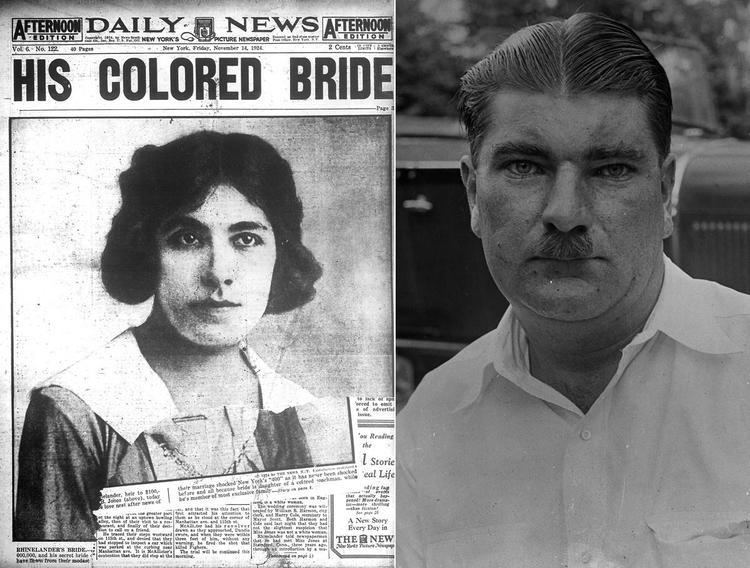 | ||
Born May 9, 1903 ( 1903-05-09 ) Pelham, New York, U.S. Known for Rhinelander v. Rhinelander Spouse(s) Alice Jones (m. 1924; div. 1929) Died February 1936, Long Beach, New York, United States | ||
Leonard "Kip" Rhinelander (May 9, 1903 – February 20, 1936) was an American socialite and a member of the socially prominent and wealthy New York City Rhinelander family. His marriage at the age of 21 to Alice Jones, a biracial woman who was a working-class daughter of English immigrants, made national headlines in 1924.
Contents
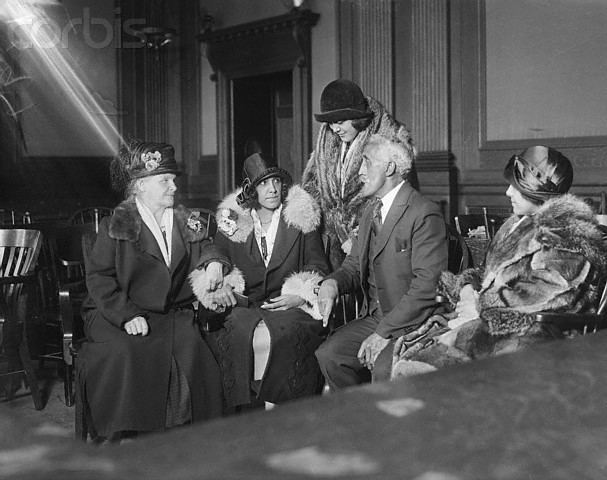
Their 1925 divorce trial highlighted contemporary strains related to the instability of the upper class, as well as racial anxiety about "passing" at a time when New York was a destination for numerous blacks from the South in the Great Migration and immigrants from Southern and Eastern Europe. The trial also touched on the vague legal definition of the time as to who was to be considered "white" or "colored," alternately portraying race as biologically determined and knowable or as more fluid.
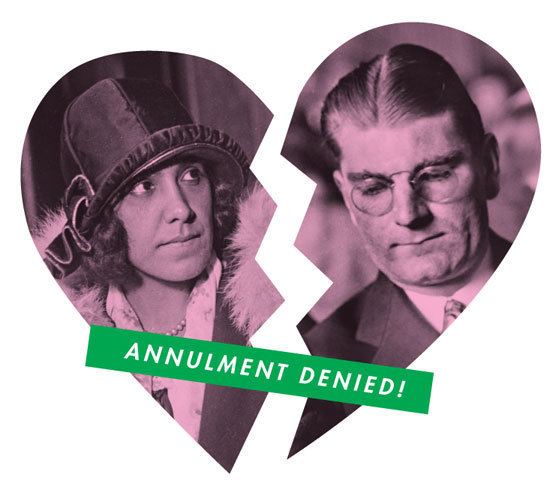
Early years
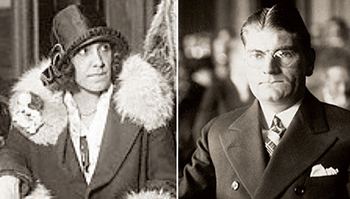
Leonard "Kip" Rhinelander was born in 1903 Pelham, New York to Adelaide Brady (née Kip) and Philip Jacob Rhinelander. Called Kip, he was the youngest of five children, including four sons and one daughter. The couple's eldest child, Issac Leonard Kip Rhinelander, died in infancy. The mother Adelaide Rhinelander died on September 11, 1915 after sustaining burns when an alcohol lamp on her dressing table exploded. The third son, T.J. Oakley Rhinelander, died in France in 1918 while serving in the 107th Regiment during World War I. Kip Rhinelander had problems with stuttering and was portrayed as relatively slow in school.

The immigrant ancestor of the Rhinelander family in America was Philip Jacob Rhinelander, a German-born French Huguenot who immigrated to the United States in 1686 to escape religious persecution following the revocation of the Edict of Nantes. He settled in the newly formed French Huguenot community of New Rochelle in 1686, where he amassed considerable property holdings, the basis for the family's wealth.
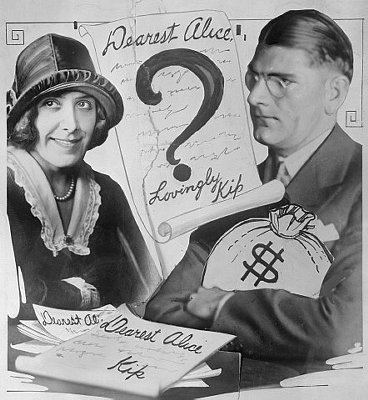
The Rhinelanders are considered one of the nation's earliest shipbuilders. The family also had holdings in real estate and owned the Rhinelander Real Estate Company. By the late 19th century, many members of the family were active in philanthropic causes and participated in New York high society as part of rituals that reinforced the class lines of presumed white ancestry, wealth and Protestant religion. But the upper class was unstable in the late 19th century and early 20th century. Violations of marriage conventions within the class were often socially punished.
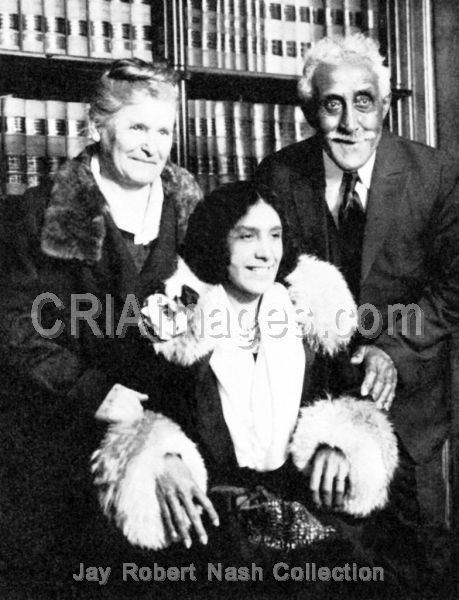
Leonard's uncle William Rhinelander, his father's older brother, had caused a scandal in 1876 by marrying Margueretta McGuiness, an Irish Catholic immigrant who had been a servant in the family's household. For his violation of class mores by the marriage, William was estranged from and disinherited by his parents. After William shot the family lawyer in 1884 on suspicion that the man was withholding a remittance, the family attempted to have their son declared insane (which might also enable them to annul his marriage). William Rhinelander succeeded in defeating the lunacy charge and being released from jail, but the estrangement lasted and he continued to embarrass his family. He was disinherited and dropped from the family's genealogical charts.
Romance
In 1921, Leonard "Kip" Rhinelander at age 18 began a romance with Alice Beatrice Jones, a domestic whom he met in New Rochelle through her sister while out with friends. A few years older than Rhinelander, she was the daughter of working-class English immigrants: her mother was white and her father was of mixed race, considered mulatto in England. The family belonged to a white church and interacted with white neighbors; the daughters were majority white. Alice had sisters Grace and Emily. About this time Rhinelander was attending the Orchard School in Stamford, Connecticut, an inpatient clinic where he was seeking treatment to help him overcome extreme shyness and to cure his stuttering. Upper-class men were known to have liaisons with lower-class women; the threat to upper-class solidarity was in marriage.
They had a three-year romance, including stays at a hotel (driven there by his father's chauffeur) and travel together in New England, during which time Alice's father tried to separate them. He appealed to Rhinelander to leave his daughter alone. He felt no good would come because of their class differences.
Marriage
The young couple married at the New Rochelle, New York courthouse on October 14, 1924, shortly after Rhinelander turned 21 and received an inheritance from his grandfather. The couple moved in with Alice Jones' parents in nearby Pelham Manor.
Rhinelander did not tell his family of the marriage but continued to work at the family Rhinelander Real Estate Company. Although the couple attempted to keep their marriage secret (Jones' sister Grace claimed the couple paid reporters not to announce their marriage), news of the marriage was learned and announced by the press. Because of the Rhinelanders' fortune and social standing, New Rochelle reporters were eager to learn about Jones' background and began investigating. Reporters discovered that Jones was the daughter of working class English immigrants and her father, George, was a "colored man".
The Rhinelanders got wind that reporters had discovered Jones' mixed-race birth and attempted to keep the information out of the papers, as the marriage thus violated upper-class standards for status, class and race. According to one article printed in the New York Daily Mirror, the Rhinelanders sent an "agent" to warn the editor of the New Rochelle Standard Star that if the story was printed, there would be "dire punishment". The editor ignored the threat and on November 13, 1924, the New Rochelle Standard Star printed the story with the headline, "Rhinelander's Son Marries Daughter of Colored Man."
The New York Evening Post picked up the story but was hesitant to identify Jones' father as black. They instead referred to George Jones as being "West Indian". Other papers picked up the story but most were also careful to omit the racial angle, choosing instead of focus on the differences in social class (in varying papers, Jones was identified as a nanny and "the daughter of a cabdriver"). The Hearst-owned tabloid New York Daily Mirror, however, ran a front-page banner headline: "RHINELANDER WEDS NEGRESS/Society dumbfounded." Most other accounts referred to the jobs of Jones (nurse or laundress) and her family (father a stagecoach driver and uncle a butler), which at the time were understood to be positions held by blacks, as so many had come to New York in the Great Migration and replaced the Irish in these positions. The larger city papers were also wary of printing such a scandalous story due to the Rhinelanders' wealth and prominent social status. In this period, with increased immigration to New York from Eastern and Southern Europe, as well as from the rural South, there was considerable anxiety about social class and racial passing, as no one knew any longer where people had come from and could not identify race by appearance.
Divorce trial
For a time, Rhinelander stood by his wife during the intense national coverage of their marriage. After two weeks and a threat of disinheritance, he succumbed to his family's demands that he leave Jones and signed an annulment complaint that his father's lawyers had prepared. The document asserted that Jones had intentionally deceived Rhinelander by hiding her true race and had passed as a white woman. Jones' attorney denied Rhinelander's claim on her behalf, saying that her mixed race was obvious. Rhinelander later said that Jones hadn't deceived him outright but did so by letting him believe she was white. Jones and her attorney refused to litigate her "whiteness," noting that Rhinelander had spent time with her family, including a black brother-in-law and mixed-race niece.
The ensuing divorce trial in New Rochelle was known as Rhinelander v. Rhinelander and attracted national attention. Rhinelander's attorney was Isaac Mills, a former New York Supreme Court justice. Jones retained a former protégé of Mills, Lee Parsons Davis. The jury was all-white and all-male. Jones' attorney Davis said openly that his client and Rhinelander had engaged in sex before they were married; he read love letters written by Rhinelander which detailed the couple's intimate sexual activity. Davis contended that Rhinelander had seen Jones' "dusky" breasts and legs, thus making it impossible for him not to have known that Jones was bi-racial. He also showed that Rhinelander had clearly pursued her, overturning Mills' presentation of Rhinelander having been bewitched by an older woman. In an unusual turn, vaudeville star Al Jolson was called to testify that he did not have an affair with Jones, after a letter was disclosed at the trial in which she said she heard from a co-worker that Jolson was a "flirt."
The trial was notorious for Jones being asked to display some of her body to the jury in the judge's chambers. Wearing a coat over underwear, she dropped the coat to the top of her breasts so they could see her shoulders; then she pulled it up so they could see her lower legs. The question of "whiteness" was not litigated but this was Davis' attempt to show what Rhinelander would have seen.(245 N.Y. 510). The jury viewed her shoulders, back and legs, concluding that she was indeed "colored" and that Rhinelander had to have been aware that she had some black ancestry. This was to prove that she had not tried to defraud him. The judge barred reporters from seeing the demonstration to prevent any photographs. The tabloid newspaper New York Evening Graphic, which had regularly used composographs to depict various events (usually salacious in nature), created a photograph depicting a model stripped to the waist with her back to the camera being viewed by a group of lawyers and one woman in a courtroom. The photo ran on the front page of the Evening Graphic and boosted the paper's circulation.
After weighing all the evidence, the jury ruled in Jones' favor. The annulment Rhinelander requested was denied and the marriage was upheld. "Alice's court victory may have been enabled by the fact that Alice performed her racial identity as the all-white," male, married jurors expected of a colored woman, and that Leonard failed to perform his racial, gender, and class identities as expected of him as a white, wealthy gentleman."
This was expected to prevent him from ever marrying again, even after a divorce, as he had violated white upper-class social norms. Rhinelander appealed several times but the verdict was upheld. He disappeared from public view but was discovered living in Nevada in July 1929. Rhinelander was using the assumed name "Lou Russell", had grown a mustache, and was working as a woodcutter. Jones remained in New York where she filed a separation suit against Rhinelander, charging him with abandonment and his father with interference with the marriage. In December 1929, Rhinelander was granted a divorce by default in Las Vegas. The divorce was not recognized in New York, where Jones still had a separation suit pending.
Rhinelander and Jones eventually reached a settlement in the separation suit. Rhinelander was ordered to pay Jones a lump sum of $32,500 (approximately $466,000) and $3600 a year for the remainder of her life ($300 a month, which was never adjusted for inflation). In return, Jones forfeited all claims to the Rhinelander estate and agreed not to use the Rhinelander name or to speak publicly or write about her story. She honored those terms for the rest of her life.
The ambiguity about appearances and construction of "race" at the time is demonstrated by the censuses from 1900 to 1930; in most, Alice and members of her family in New Rochelle, New York, were classified as "white." In the 1930 census, in which she was still listed as "Alice Rhinelander," someone later changed her classification to "negro", but her sister next door was still classified as white. In that census only, their father George was classified as "negro."
Later years
Rhinelander eventually returned to New York where he worked as an auditor for his family's company, the Rhinelander Real Estate Company. Rhinelander never remarried. Alice Jones did not marry again; she continued to live with her parents in Pelham Manor. Her father died of a heart attack in 1933. Her mother died of a stroke in December 1938.
Death
On February 20, 1936, Rhinelander died of lobar pneumonia at the age of 32 at his father's home in Long Beach, New York. He was buried in the family vault in Woodlawn Cemetery in The Bronx.
After Rhinelander's death, his father Phillip continued to pay Jones her yearly settlement money. After his death in 1940, his estate continued payments until 1941 when they abruptly stopped. Jones took Phillip Rhinelander's heirs (his daughter Adelaide, two nieces and two granddaughters) to court. After two years of court battles, the New York Supreme Court upheld the original settlement agreement, and the heirs resumed Jones' payments.
Later years
After her final court battle with the Rhinelanders, Alice Jones remained out of the public eye. She died on September 13, 1989 of a heart attack caused by a stroke and hypertension. She was buried in Beechwoods Cemetery in New Rochelle with a gravestone bearing the name "Alice J. Rhinelander."
Case citation
Leonard Rhinelander v. Alice Rhinelander; 219 A.D. 189; 219 N.Y.S. 548; Supreme Court of New York, Appellate Division, Second Department (1927).
